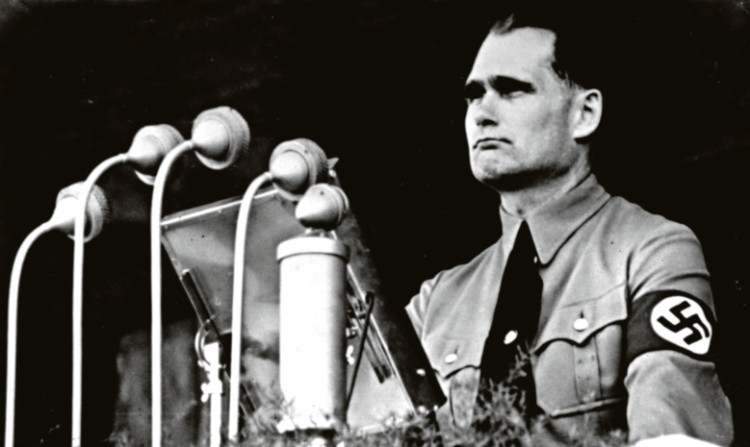
Historians are vowing to get to the bottom of a Nazi leader’s doomed crash landing in Scotland while those who were there are still alive.
At the height of the Second World War, Rudolf Hess jumped out of a plane and parachuted into a field near Glasgow only to be captured by the Home Guard.
The arrival of Hitler’s right-hand man on Eaglesham Moor has mystified the world ever since.
Now local historians Bill Niven and Kenneth Mallard are hoping to uncover new evidence that will finally shed light on his reasons for making the journey.
They plan to interview and film those who were living in the area the night Hess landed. And they’re set to clinch a Lottery-funded grant to help with the project which is already under way.
Kenneth, who is secretary of the Eaglesham Historical Society, said: “A few people have already mentioned to me that they still remember the night Hess landed.
“We’ve also uncovered new stories from a policeman at the time and a member of the Home Guard.
“The idea is to create an interesting and informative record including a compilation of oral histories from local residents which, along with the film, will be offered to groups, schools and libraries as an educational resource.”
Hess landed in Scotland on May 10, 1941, just before the Nazi invasion of the Soviet Union. It is believed he was heading for a meeting with the Duke of Hamilton, with the intention of negotiating peace between Britain and Germany.
However, after his landing in Britain, he was held captive before being convicted of war crimes at the Nuremberg Trials. He was moved to Spandau Prison in Belin in 1947, and was held there until his suicide in 1987.
Official secrecy covering his Scottish landing was extended to 75 years and British MOD records are sealed until 2017.
But Bill and Kenneth hope their findings can bring an end to a mystery that has had conspiracy theorists frothing with intrigue for decades.
Hess landed near Floors Farm in Eaglesham and was apprehended by local ploughman Davy Mclean. As part of his research for the film Bill has uncovered a letter revealing that Hitler’s deputy told Davy that he understood the Duke of Hamilton lived in nearby Eaglesham House. But Hess had in fact mistaken the building for Dungavel, 10 miles to the east.
The letter was handwritten by Margaret Baird, of nearby Floors Farm, and sent to her sister Jeanie on May 15, 1941.
Bill said: “This to me is definitive evidence that Hess believed the Duke of Hamilton would assist him. We’ve also discovered that the Duke of Hamilton once dined with Hess in Berlin but many dignitaries were there so they didn’t actually know one another, as has been previously claimed.
“The great thing about oral history is that it gets much closer to the truth than layer upon layer of conspiracy theories. There are many local people who are still very much in the know about what really happened that night.”
Dr Jim Phillips, an expert in Oral History at Glasgow University, said: “There’s no doubt oral history helps us invaluably in providing us with information we don’t have in official documents.
“Within formal records of war things aren’t always recorded about the strangeness of particular incidents.”

Enjoy the convenience of having The Sunday Post delivered as a digital ePaper straight to your smartphone, tablet or computer.
Subscribe for only £5.49 a month and enjoy all the benefits of the printed paper as a digital replica.
Subscribe